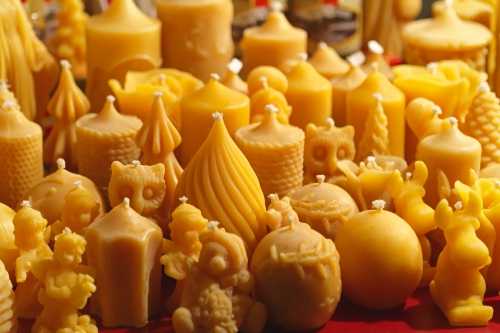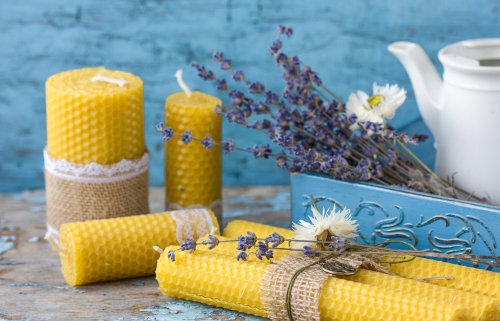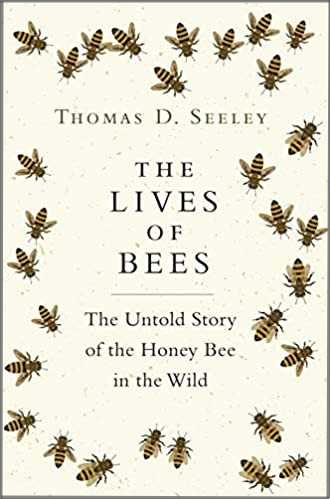Beeswax Candles
After harvesting honey, the wax cappings and comb can be rendered for candle making. Beeswax is very energy intensive for bees to make, so it seems almost criminal to waste it.
Candles are very popular, and beeswax candles should fetch a premium at your local honey or craft fair (arguably having a number of advantages over paraffin wax), or even if you sell them online, so if you don't want to use them yourself, there are others who will gladly do so.
Rendering beeswax for candle making
I already have a page outlining simple methods for rendering beeswax from wax cappings and comb, so I won't repeat that here.

Instead, we'll assume you have taken your beeswax through the process. Once you have done that, you can follow these steps:
1. Once you have removed the solid, cleaned block of wax fresh from the pan or bowl, it's a good idea to filter and clean the wax again, in order to get quality candles free of debris.
2. Select suitable molds or even a waxed drinking cup. Melt the wax in a bain-marie, allow to cool slightly, and pour into suitable candle molds or candles containers that have already been prepared with a wick (see below).
Container and molds for making beeswax candles
Suitable Materials
Heat-resistant glass. Some recycled jars may be suitable.
Tin
Waxed drinking cup (used as a mold only). The drinking cup must be removed prior to lighting.
Specialist candle molds.
Size
The wider the diameter of the container, the more difficult it will be to find a wick that will efficiently burn the wax (inefficient burning means wastage) unless you use multiple wicks.
On the other hand, a tall, narrow, bottle-shaped container is likely to turn black at the top, and may be an inefficient choice because of the amount of wick required.
If you want to sell the candles, this may influence your choice of container or candle mold.
Choosing wicks and adding a candle wick to the mold or container
Wicks, complete with sustainers (the metal disc at the bottom of the wick) and cut to size, can be purchased from specialist suppliers.
Alternatively, candlewicks and metal sustainers can be purchased separately (and inexpensively) for you to decide on your preferred wick length.
Braided wicks
The thicker the wick, the wider the candle it will burn. On the other hand, a wick that is too thick for the candle diameter will cause the candle to split down the middle.
Choosing the appropriate wick will ensure minimum wastage of unburned beeswax on the outer edges of the candle during burning.

Secure the wick in place
Glue dots are handy for securing a candlewick in place and to ensure the wick does not move. Simply add a glue dot to the underside of the metal sustainer, and position the wick inside the container.
If you found this page helpful or interesting, I'd really be grateful if you would share it with others - if not this page, perhaps another, such as Gardening For Bees.
Thank you so much :) .

